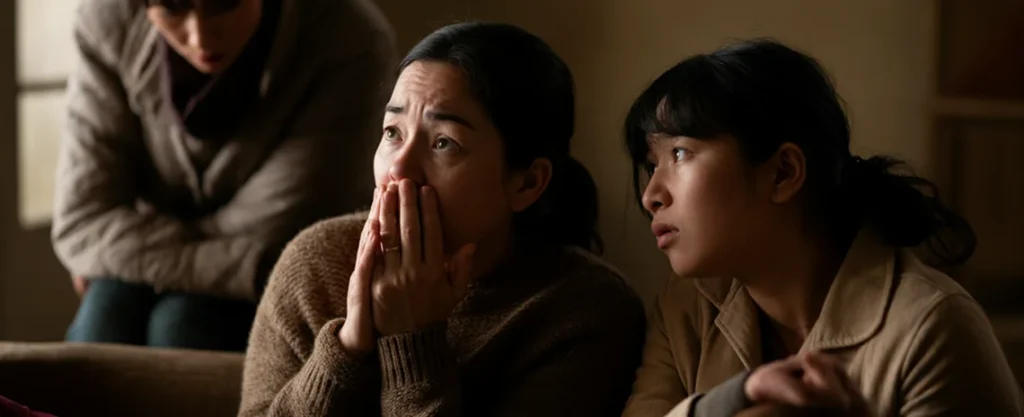Dealing with a Traumatic and Sudden Loss

Making Peace with Our Experiences
Clements, DeRanieri, Vigil, and Benasutti (2004) state that successful therapy is essential after a sudden traumatic death because it relies on understanding the devastation of the incident. The immediate shock and chaos can lead to complicated grief and bereavement; understanding the complicating factors of sudden traumatic death can enhance therapeutic guidance and intervention. Furthermore, homicide and suicide continue to carry stereotypes that affect perceptions of those who have died in these manners, as compared to car accidents or occupational deaths, which often include repulsive and graphic details of a person’s final moments. The reality for survivors is that a loved one has died suddenly, unexpectedly, and violently, leaving family members with feelings of resentment socially, psychologically, and emotionally.
Walter, Hourizi, Moncur, and Pitsillides (2011) conducted a study involving elderly participants aged 63 to 86 who interact online; these individuals were hesitant to join Facebook due to concerns about disclosing personal information. Older adults seem to prioritize privacy more than younger adults. Additionally, consideration should be given to whether those at the end of their lives can benefit from the internet, and if so, whether elderly individuals nearing the end of life should be included in online conversations. There is also a lack of research on those suffering from certain diseases, such as cancer, and limited exploration of social networks for individuals who are dying.
Life Adjustments After Loss While Dealing with Trauma and Chronic Illnesses
Clements, DeRanieri, Vigil, and Benasutti (2004) highlight that surviving family members, friends, and coworkers often feel overwhelmed by emotions following the sudden traumatic death of a loved one, as they lack the time or ability to prepare mentally and emotionally. Initially, there is shock and numbness coupled with the anticipation of notifying friends and family. Although preparing for a funeral and burial is essential, it is often done last minute, resulting in chaos in the face of sudden traumatic death. Sudden loss brings about drastic changes to the family system, triggering an unexpected need to evaluate role differences within the family structure. This situation allows for no preparation or anticipation of the loss, which can lead to impulsive and disorganized attempts to regain balance within the family.
Walter, Hourizi, Moncur, and Pitsillides (2011) mention that individuals suffering from life-threatening diseases, such as breast cancer, have found that online support is more accessible and influential in providing social support and improving health outcomes compared to in-person support groups. Online support is available at any time and allows individuals to connect with others who share similar health issues. However, there are concerning websites, such as those related to suicide, that depict incidents or promote unhealthy behaviors. Health professionals and family members express concern over such sites since they may not be properly monitored. Moreover, individuals facing terminal illnesses are often worried about their privacy online and prefer to focus on strengthening their relationships with established contacts.
Readers Can Safely Utilize Social Media to Help Cope with the Grieving Process
Walter, Hourizi, Moncur, and Pitsillides (2011) found that online cemeteries tend to attract those who are grieving. The editor of a special journal issue stated that many forms of mourning in modern America are ineffective, suggesting that the internet offers a new space for individuals to express their grief. In the new millennium, special memorial sites have continued to exist but are increasingly overshadowed by the number of connections made through social media. Pictures of deceased individuals, conversations with them, and feelings of mourning can become part of everyday interactions on platforms like Facebook. Mass media have historically brought death into living rooms, but audiences typically do not personally know those featured in these media. Online support groups, particularly for individuals who are ill, dying, or grieving, often keep their health struggles private and communicate within personal groups, reducing their openness to those without significant illnesses. Those who visit a digital cemetery often select links to local websites that they can engage with during their grieving process.
Clements, P. T., DeRanieri, J. T., Vigil, G. J., & Benasutti, K. M. (2004). Life After Death: Grief Therapy After the Sudden Traumatic Death of a Family Member. Perspectives in Psychiatric Care, 40(4), 149–154. https://doi-org.lopes.idm.oclc.org/10.1111/j.1744-6163.2004.tb00012.x
Walter, T., Hourizi, R., Moncur, W., & Pitsillides, S. (2011). Does the Internet Change How We Die and Mourn? Overview and Analysis. Omega: Journal of Death & Dying, 64(4), 275–302.
